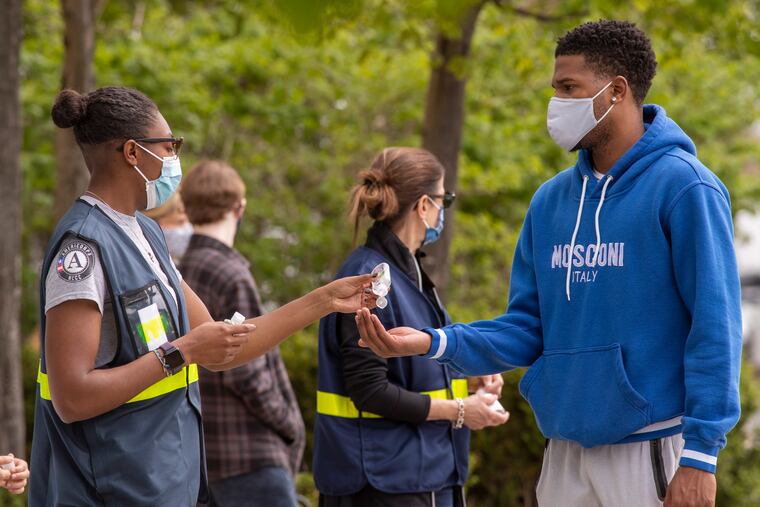COVID-19 still spreading through Philly region as more can get vaccine, but Pa. and N.J. see different trends
With hospitalizations increasing in Pennsylvania, health officials are urging non-vaccinated residents to continue taking precautions.

Pennsylvania and New Jersey added more new coronavirus cases per capita than almost any other state last week, according to the Centers for Disease Control and Prevention, with only Michigan notching a higher case rate.
But while New Jersey’s COVID-19 metrics appear to be plateauing or trending downward from recent weeks, Pennsylvania’s cases are on the rise, along with hospitalizations.
And on Monday, when vaccines became available around the country to all people 16 and over, New Jersey state epidemiologist Christina Tan urged non-vaccinated residents not to let their guard down yet.
“New Jersey, as well as the rest of the country, we kind of remain at this really delicate balance,” she said at the state’s regular coronavirus briefing. “Even though we’re getting our vaccination coverage up, that doesn’t help with the immediate issue, that we’ve got a lot of virus still circulating in the community.”
More than 2.6 million New Jerseyans are fully vaccinated, bringing the state more than halfway to Gov. Phil Murphy’s goal of vaccinating 4.7 million people — about 70% of the adult population — by the end of June. Another million people are partially vaccinated. Some scientists estimate that 70% is the minimum needed to achieve herd immunity, the point at which so many people are protected that even those who aren’t inoculated also are protected from the virus.
In Pennsylvania, where vaccines became available to residents 16 and over last week, 3.3 million people are now fully vaccinated, according to the CDC. That’s nearly 32%, a bit behind New Jersey, but on par with national statistics. More than 44% of eligible Pennsylvanians has had at least one dose, according to an Inquirer analysis of CDC data.
Vaccine eligibility opened to all Americans 16 and over on Monday, marking a new challenge to public health as the focus shifts from finding enough vaccine to meet demand to making sure that demand for the shots stays high.
“Folks, I have good news,” President Joe Biden said in a short video. “Everybody is eligible, as of today, to get the vaccine. We have enough of it; you need to be protected, and you need, in turn, to protect your neighbors and your family. So please, get the vaccine.”
But while Pennsylvania’s 14-day average of hospitalized patients is below what it was at the height of the spring peak last May, “the moving average of number of hospitalized patients has started to increase,” the state Department of Health said in a statement Monday. The number of patients on ventilators has also grown in recent days, and more young people are being hospitalized with the virus.
Though far fewer people die of COVID-19 now than in the early days of the pandemic, hospitalization rates are still worrisome as the long-term health effects of severe cases have become more apparent.
Pennsylvania averaged more than 5,000 cases per day over the last week, according to state data. New Jersey, which saw cases spike in March, averaged more than 3,200 over the same time period.
Philadelphia Health Commissioner Thomas Farley has also expressed concern about the rising rate of new cases, hospitalizations, and deaths. Although vaccinations are now open to everyone, he said, the pandemic and risk is “not behind us.”
The city announced 1,278 new confirmed cases of the coronavirus Monday, with Pennsylvania adding 1,914. As of Monday there were 519 coronavirus patients in Philadelphia hospitals, with 50 of them on ventilators.
New Jersey, which on Monday became one of the last states in the nation to open vaccine eligibility to the general public, added 1,935 cases. Hospitalizations have stabilized after creeping up earlier this month.
“It’s slowly but surely beginning to go in the right direction,” Murphy said of the numbers. Speaking at his regular coronavirus briefing in Trenton, he said the growing number of people who are vaccinated and the increasingly nice weather that allows for safer outdoor gatherings are “all cause for quiet, cautious optimism.”
Graphics editor John Duchneskie, reporters Rob Tornoe and Laura McCrystal, and the Washington Post contributed to this article.